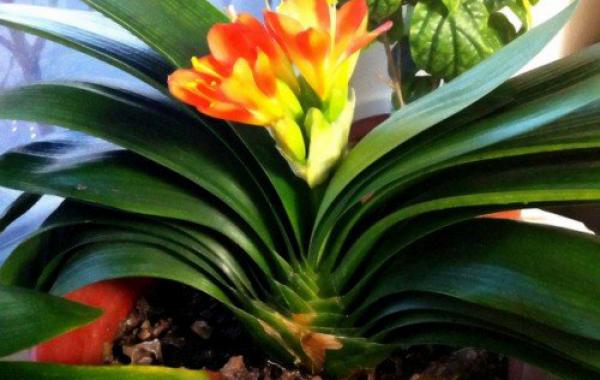Management techniques of Magnolia in Summer

Gentleman orchid as its name is like a modest gentleman, growing up is particularly attractive, no matter when it is blooming or not, it is a very good ornamental plant, many people like to raise a pot, its leaves are green, flowering clusters, attractive. However, when raising orchids, we will encounter a lot of unsatisfactory places, for example, the leaves of orchids turn yellow, but it is more common.
The gentleman orchid plant shape is dignified, the leaf arrangement is neat, the leaf color is greenish and moist, it is known to watch the flowers rather than appreciate the leaves, it is a kind of flowers that people like to breed very much. So do you know how to choose a gentleman orchid? Let's take a look at the selection skills of gentleman orchid with the editor. To evaluate the quality of Cymbidium varieties, its leaves account for a large proportion. So what are the characteristics of the leaves of the top-grade magnolia? 1. The leaves of the top-grade magnolia should be short and wide, with a length of between 9 cm and 12 cm, the ratio of length to width within 4:1, and some varieties can reach 2:1 or even 1:1, such as Henglan.
Gentleman orchid, a name will remind people of the character of a gentleman, integrity, nobility, elegance, so many people will want to raise such a plant. The suitable temperature for the growth of Cymbidium is 20-25 ℃, and it is in a semi-dormant state when the temperature is more than 30 ℃. It is difficult to raise Cymbidium at this time. If it is not maintained properly, it can easily lead to yellow leaves, rotten stems and rotten roots. In order to make the gentleman orchid spend the summer, the management measures of the gentleman orchid must be done well in summer. The specific methods are as follows:
Magnolia cooling in summer
Shading and cooling: shade in the middle of summer, and spray water 3 ^-4 times a day, and water once every 2-3 days. Sand cooling: put a tray at the bottom of the flowerpot, which is filled with sand. Sprinkle water on the sand 3-4 times a day. The cooling can be achieved by absorbing heat from the air when the water contained in the sand evaporates. Pool cooling: put a hard board or cement precast board on top of a sink filled with cold water, and then place the flowerpot on the board or cement board. The continuous evaporation of water heated can not only increase the humidity of the air, but also reduce the temperature.
The gentleman orchid controls the light
In the middle of summer, it is ideal for a gentleman's orchid to see 2 hours of morning light every day, and shading at other times is also possible. If there is no condition to see the morning light, it is OK to use semi-shading, that is, to put the flowerpot under the shade or grape trellis. If you put it indoors, you must keep a distance from the front sunny window, and cover the light with white curtains with eyes, so that the gentleman orchid will accept the "flower light", otherwise the direct sun will easily suffer from sunburn. In addition, no matter which method is used to control the light, the sunny side should be adjusted every 10 days or so to ensure the regular growth of the leaves.
The gentleman orchid is properly watered.
Although the amount of water in summer is more than that in other seasons, it is still necessary to adhere to the principle of not getting dry and watering thoroughly, not as soon as the topsoil is dry, otherwise the basin soil will be in a muddy state for a long time, and it is easy to soak the succulent roots and lead to yellow leaves. Water less, especially under the condition of poor ventilation.
The rotting Root of Cymbidium and its solution
Gentleman orchids sometimes have rotten roots. It is mainly caused by high temperature, too much watering, application of thick fertilizer or immature cultivated soil bacteria, etc. Generally speaking, there are two kinds of rotten roots: one is that most of the roots are good, only part of them are rotten; the other is that most or all of the roots are rotten. The way to save the former case is to knock the rotten root out of the basin immediately after finding the rotten root, carefully remove the attached soil, rinse the root system with clean water, and then remove the rotten root with a clean and sharp razor. Then smear the rotten root with 0.1 potassium permanganate solution, or wrap the leaves with toilet paper and irradiate them in the weak sun for half an hour, use ultraviolet light, and then plant them in the passing matrix. After planting, put a transparent plastic bag in a semi-shaded place and water less to keep the basin soil slightly moist. At the same time, 0.2% potassium dihydrogen phosphate aqueous solution was sprayed on the leaf surface every 5-7 days to increase nutrients and promote its rooting.
In this way, the new root can grow after more than two weeks, then take off the bag and gradually transition to normal maintenance. The salvage method for the latter case is: first rinse the base of the stem with water, then cut off the rotten part laterally with a sharp knife (requiring the incision to be dry and smooth), then smear sulfur powder or charcoal powder at the cut to prevent wound infection, put it in a cool and ventilated place, plant it in a plain sand basin after the incision surface is slightly dry, water once two days later, and keep the basin soil moderately moist and avoid fertilization. Under the temperature of 20-25 ℃, the new roots will grow around the incision after about 10 days, and can be transplanted into the new culture soil basin after about 45 days, and gradually transferred to normal maintenance.
Stop applying fertilizer to Magnolia
When the indoor temperature is higher than 25 ℃, you should stop applying fertilizer. Because the roots will not be absorbed if you fertilize them. On the contrary, if the fertilizer is fermented in the soil to produce high temperature, it is also easy to burn the fleshy root. For example, if there is more fertilizer in spring, the basin soil can be changed from the upper part of the basin to 1 / 2 in summer, and then changed in after the Beginning of Autumn.
The summer management method of gentleman orchid is introduced here. I hope it will be helpful to the friends who like to plant gentleman orchid. We might as well try these methods in the process of planting. I believe everyone will be very fruitful.
Related
- Is the orchid suitable for indoor use? Is it good for the body?
- How to prevent the empty root of orchids?
- What to do after the crab claw orchid is withered?
- Why are the leaves of orchids always yellow? Fertilizing and watering.
- Can the root of the gentleman orchid be saved if it is rotten?
- Diagnosis and treatment of cotton-blowing beetle insects in Cymbidium
- There is a way for a gentleman's orchid to rot.
- What is the most suitable temperature and humidity for the orchid?
- How to raise a gentleman's orchid? Cultivation techniques of Cymbidium
- How to prepare the nutritive soil for the cultivation of Cymbidium



